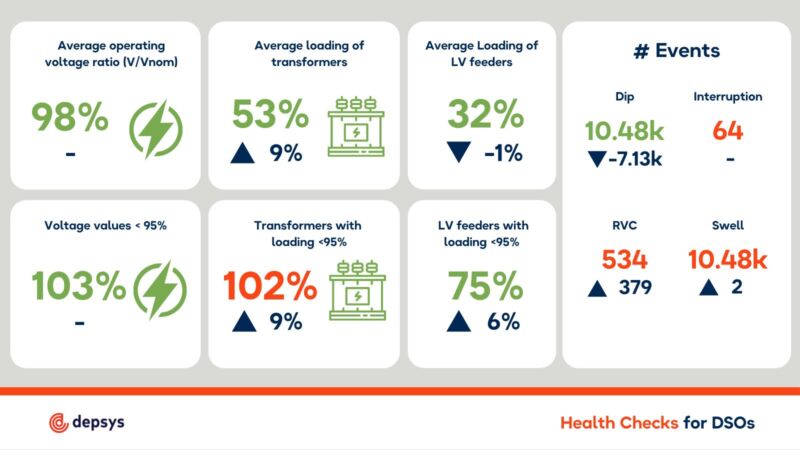depsys, the cleantech company that empowers distribution grid managers to evolve operations through digital technology, reports that the acceleration of photovoltaic installations, charging points for electric vehicles and the intensive use of heat pumps, start causing significant pressure points and bottlenecks in distribution networks.
This data comes from the free quarterly Health Check report that depsys provides all users of its digital grid management platform, GridEye. Designed to support operators in making rapid and accurate grid optimisation decisions, it provides a detailed analysis of the monitored network areas, showing network status, trends, capacities, anomalies or outliers as well as actionable recommendations. These insights will prove evermore important as operators manage increased grid integration of renewables.
Having begun over a year ago, the data trends from the Health Check reports are becoming increasingly clear:
- In new development areas with a large number of heat pumps, grids have been heavily loaded, with load rate doubling over one quarter.
- The supply of photovoltaic energy on sunny days in the spring created peak loads at midday of up to 80% for some transformers normally used at 40% (these peaks only reached 60% in winter)
- Increasing uptake of EVs and therefore charging infrastructure, present challenges to the grid not only in terms of loading but also power quality. This has led to violations of EN50160 standards, which has traditionally rarely happened in Europe, in areas where public EV charging stations are connected to the grid.
- Winter events such as heavy snowfall caused many voltage drops in the relevant networks with one depsys user measuring around 30 times more voltage drops than usual during a week of heavy snowfall
The findings showcase the variables that operators are facing when managing distribution networks through the energy transition, with the combination of seasonal effects and new clean technologies having a significant impact on grid load and capacity. If not effectively planned for, this could have problematic consequences for grid performance.
Emilie Zermatten, Technical Account Manager at depsys comments: “For network planning, it is above all the utilisation trends that are important – and these can be quickly recognised on the basis of the quarterly reports. The statistical evaluation forms a good basis for decision-making for maintenance managers and network planners as well as for those who want to better understand their network and prepare for the challenges of electromobility and the heat and energy transition at an early stage.”






